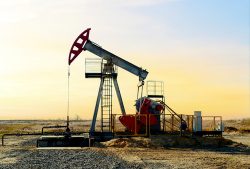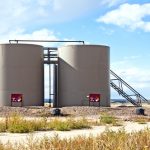From Start to Flow: A Comprehensive Guide to Oil Field Pump Installations
 Oil fields are complex systems that require numerous pumping solutions to extract, process, and transport crude oil. When it comes to installing a pump in an oil field, there are several crucial steps to ensure smooth operations and maximize production efficiency. In this comprehensive guide, we will take you through the entire process, from the initial planning stages to the final flow of oil through the pump.
Oil fields are complex systems that require numerous pumping solutions to extract, process, and transport crude oil. When it comes to installing a pump in an oil field, there are several crucial steps to ensure smooth operations and maximize production efficiency. In this comprehensive guide, we will take you through the entire process, from the initial planning stages to the final flow of oil through the pump.
1. Preliminary Assessment and Planning
Before installing a pump in an oil field, it is essential to conduct a preliminary assessment to evaluate the specific requirements of the field. Factors such as the flow rate, pressure, temperature, and type of oil being pumped must be considered. Additionally, environmental and safety regulations must be thoroughly analyzed to ensure compliance.
Once the assessment is complete, the planning phase can begin. This includes determining the best location for the pump, considering accessibility, operational convenience, and safety. Collaboration between engineers, geologists, and environmental experts is crucial at this stage to ensure a smooth installation process.
2. Equipment Selection
Selecting the right pump for the oil field is vital to ensure optimal performance and longevity. Different pumping technologies, such as centrifugal, reciprocating, or submersible pumps, may be suitable depending on the specific conditions of the oil field.
The selection process involves considering factors such as the flow rate, pressure requirements, viscosity of the oil, and any specific challenges posed by the oil field environment. It is essential to consult with experts in pump technology to choose the best equipment that meets the field’s unique requirements.
3. Site Preparation and Foundation
Once the pump and supporting equipment have been selected, the site preparation process begins. This includes clearing the area, leveling the ground, and preparing the foundation for the pump installation. The foundation should be stable, properly reinforced, and comply with engineering standards to ensure the pump’s stability and prevent any potential damages in the future.
4. Installation and Connection
The actual installation involves assembling and connecting the pump, motor, and other supporting equipment. Skilled technicians or engineers must handle this process to ensure proper alignment and secure connections. This step also includes installing auxiliary equipment such as valves, gauges, and control systems necessary for the pump’s operation.
Proper alignment of the pump and motor coupling is crucial to prevent any premature wear or damage. Experts should use precision instruments to ensure accurate alignment, minimizing any operational issues in the future.
5. Electrical Wiring and Control Systems
After the physical installation, the electrical wiring and control systems must be put in place. Safe and reliable electrical connections are critical for the pump’s operation and safety. This includes configuring the motor controls, sensors, and safety shutdown systems.
Qualified electricians should handle this aspect to ensure proper wiring, grounding, and compliance with electrical codes and regulations. Thorough testing and calibration of the control systems should be conducted to ensure seamless integration within the oil field’s overall infrastructure.
6. Testing and Start-Up
Before the pump is put into full operation, comprehensive testing is necessary to identify and rectify any potential issues. This includes pressure testing, flow rate testing, and verifying the accuracy of the control systems. Any necessary adjustments or fine-tuning should be made during the testing phase to guarantee optimal performance.
Once testing is complete and all components are functioning correctly, the pump can be started up gradually, closely monitoring its performance and stability. Operational parameters should be closely monitored at this stage to ensure safe and efficient operation.
Conclusion
Installing a pump in an oil field is a task that requires careful planning, expert knowledge, and precise execution. From the initial assessment and planning to the final start-up, every step plays a crucial role in the overall performance and longevity of the pump. Following this comprehensive guide will help oil field operators navigate through the installation process smoothly, ensuring seamless and efficient pumping operations.
Got Questions? Let Us Help!
More...
Categorised in: Oil and Gas Pumps, Oil Field Service




